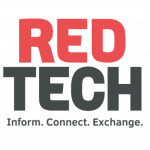MADRID — On June 19, Madrid hosted WorldDAB Automotive 2025, welcoming nearly 200 delegates from across the globe, including broadcasters, car manufacturers and technology suppliers. Matías González Martín, Spain’s secretary general for telecommunications, opened the event by reaffirming the Spanish government’s commitment to expanding the DAB+ digital radio standard.
Modern cars, with their increasingly digital dashboards and built-in connectivity, present new challenges — and opportunities — for radio. Almost any market research confirms that consumers still expect a radio receiver in any car they purchase; the issue today is less about presence and more about accessibility. As infotainment systems evolve, making radio easy to locate and operate safely while driving has become a top priority.
Broadcast first, radio is strong
“Radio in cars is critical for broadcasters to retain control over their distribution,” said WorldDAB president Jacqueline Bierhorst during her keynote. “By keeping a broadcast-first approach, we level the playing field with digital tech giants that are also competing for audience attention. The automotive sector understands the value of radio, and we must work together to keep it at the heart of the dashboard.”
Supporting this vision, Megan Lazovick, vice president at Edison Research, presented findings from surveys conducted this year in the U.S., U.K., New Zealand and Australia. While systems like Apple CarPlay and Android Auto are now available in over 30% of primary vehicles — reaching 40% of drivers in the U.S. — broadcast radio remains the most preferred source for in-car listening. Across surveyed markets, radio commands a dominant share, with 72% in the U.K. and New Zealand, and up to 84% in Australia. The data shows that the more cars are equipped with connected systems, the stronger radio’s position appears to be, thus confirming radio’s appeal to car users, notwithstanding the increasing availability of audio alternatives.
Industry’s shared vision
That usability aspect was underlined by Stefan Möller, president of the Association of European Radios. “When drivers enter a car they can intuitively locate the horn or wiper controls,” he said. “But how many of you have reached into the glove compartment while driving to find something? That’s not how radio should be treated. We don’t want radio to be in the same situation as the car glove compartment, so that it’s hard to find and hard to use.”
A key announcement at the event came from the European Broadcasting Union, representing public service broadcasters, and Bauer Media Group, one of Europe’s leading commercial radio players. They unveiled their commitment to the “Radio Ready for Connected Cars” initiative — a collaborative effort to maintain radio’s availability and visibility in modern vehicles through hybrid radio platforms that seamlessly integrate FM, DAB and IP delivery.
“We now have a shared vision and a set of principles to ensure radio remains present and prominent in the car,” said Tobias Nielsen, Bauer’s senior vice president of digital. Bierhorst added that this effort signals a united front across the industry: “We must work together to deliver one clear message about the importance of broadcast radio — and radio in general — in connected cars. And we want to show how public and private broadcasters are working together on radio’s future in this space.”
Metadata drives radio innovation
The role of metadata in delivering an engaging radio experience in connected cars was also a major theme. “To stay relevant in the car, radio must be visual,” said Gereon Joachim, vice president of automotive sales and strategy for EMEA at Xperi. “And good visual radio requires good metadata.”
Joachim explained that Xperi is likely the world’s largest metadata provider, with agreements extending beyond broadcasters to major online audio platforms, such as Spotify and others. He highlighted DTS AutoStage, Xperi’s global hybrid radio platform, which is already deployed in more than 11 million vehicles across over 140 countries. The system enables seamless integration of logos, artist images, program details and other dynamic visual elements into the in-car interface.
Beyond aesthetics, DTS AutoStage can provide broadcasters with real-time data on audience behavior, such as the number of people listening to a specific station — via FM or DAB — in any given region, or how audiences react to different content, including songs, news, or advertising segments. These analytics can help broadcasters make data-driven decisions to refine content as well as to picture out the real audience reach of each distribution channel, tailoring their simulcast strategy.
This story originally appeared in the July/August 2025 edition of RedTech Magazine.
These stories might interest you
Sveriges Radio explores car listening habits
Bauer cites digital growth in Rajar Q2 2025 figures
Xperi promotes HD Radio as digital broadcast solution for India

